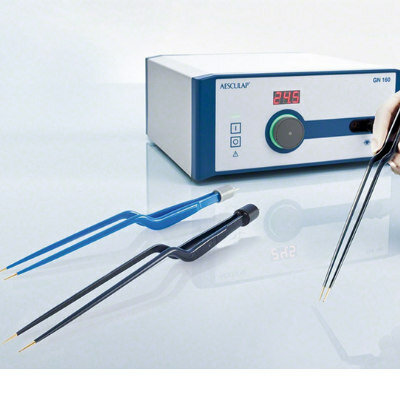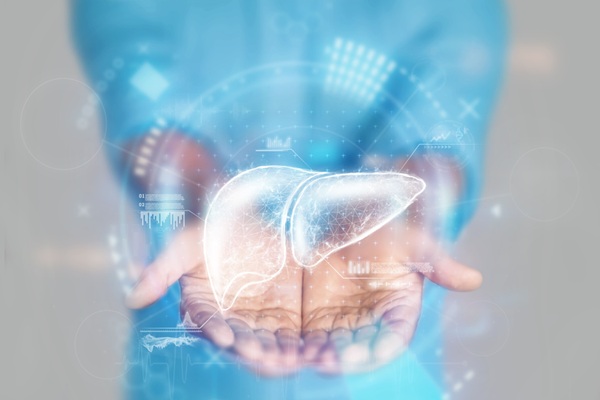Magnetic Technology Corrects Limb Length Discrepancies
|
By HospiMedica International staff writers Posted on 13 Aug 2014 |
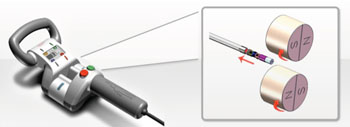
Image: The Ellipse Precice 2 Trauma Nail System ERC (Photo courtesy of Ellipse Technologies).
An intramedullary nail system use magnetic interaction to treat lower limb length discrepancies, often the result of acute or chronic fractures.
The Ellipse Precice 2 Trauma Nail System is composed of a medullary nail that contains an enclosed rare earth magnet, a telescoping lead assembly and locking screws, an internal planetary gearing system, surgical instruments, and an external remote controller (ERC). The nail system, which is supplied pre-distracted to allow for compression fracture reduction techniques, is available in various diameters, lengths, and screw-hole configurations to accommodate a variety of patient anatomies; the locking screws are also available in a variety of diameters and lengths.
To perform bone distraction, the medullary nail is inserted into the intramedullary canal of the femur and/or the tibia and secured with the locking screws. The telescoping assembly can then be adjusted noninvasively via the Ellipse ERC. The controlled, customized distraction allows for a precision lengthening phase with the ability to shorten the device if necessary. Using the ERC, The implant can be lengthened in the clinic or by the patient at home, according to the physician's direction. The Ellipse Precice 2 Trauma Nail System is a product of Ellipse Technologies (Irvine, CA, USA).
“The introduction of the Precice 2 system complements the early success of the Precice device with improved efficiency in the operating room and the larger range of patients with limb length inequality who can now be treated,” said Ed Roschak, president and CEO of Ellipse. “We continue to work every day to apply our platform technology to address unmet needs in orthopedics and spine.”
Surgical distraction osteogenesis limb lengthening methods use various constructs, which can be divided into three main groups: external, internal (intraosseal), and combined (mixed) methods. All methods generally include bone dissection, gradual bone part separation at an average speed of 1 mm a day, and the regeneration of bone stretched to the new length, which is totally ossified only after distraction is terminated. A sparing environment for muscles and joints is necessary during stretching and regeneration.
Related Links:
Ellipse Technologies
The Ellipse Precice 2 Trauma Nail System is composed of a medullary nail that contains an enclosed rare earth magnet, a telescoping lead assembly and locking screws, an internal planetary gearing system, surgical instruments, and an external remote controller (ERC). The nail system, which is supplied pre-distracted to allow for compression fracture reduction techniques, is available in various diameters, lengths, and screw-hole configurations to accommodate a variety of patient anatomies; the locking screws are also available in a variety of diameters and lengths.
To perform bone distraction, the medullary nail is inserted into the intramedullary canal of the femur and/or the tibia and secured with the locking screws. The telescoping assembly can then be adjusted noninvasively via the Ellipse ERC. The controlled, customized distraction allows for a precision lengthening phase with the ability to shorten the device if necessary. Using the ERC, The implant can be lengthened in the clinic or by the patient at home, according to the physician's direction. The Ellipse Precice 2 Trauma Nail System is a product of Ellipse Technologies (Irvine, CA, USA).
“The introduction of the Precice 2 system complements the early success of the Precice device with improved efficiency in the operating room and the larger range of patients with limb length inequality who can now be treated,” said Ed Roschak, president and CEO of Ellipse. “We continue to work every day to apply our platform technology to address unmet needs in orthopedics and spine.”
Surgical distraction osteogenesis limb lengthening methods use various constructs, which can be divided into three main groups: external, internal (intraosseal), and combined (mixed) methods. All methods generally include bone dissection, gradual bone part separation at an average speed of 1 mm a day, and the regeneration of bone stretched to the new length, which is totally ossified only after distraction is terminated. A sparing environment for muscles and joints is necessary during stretching and regeneration.
Related Links:
Ellipse Technologies
Latest Surgical Techniques News
- New Study Findings Could Halve Number of Stent Procedures
- Breakthrough Surgical Device Redefines Hip Arthroscopy
- Automated System Enables Real-Time "Molecular Pathology" During Cancer Surgery
- Groundbreaking Procedure Combines New Treatments for Liver Tumors
- Ablation Reduces Stroke Risk Associated with Atrial Fibrillation
- Optical Tracking Method Identifies Target Areas in Robot-Assisted Neurosurgery
- General Anesthesia Improves Post-Surgery Outcomes for Acute Stroke Patients
- Drug-Coated Balloons Can Replace Stents Even in Larger Coronary Arteries
- Magnetic Kidney Stone Retrieval Device Outperforms Ureteroscopic Laser Lithotripsy
- Absorbable Skull Device Could Replace Traditional Metal Implants Used After Brain Surgery
- Magic Silicone Liquid Powered Robots Perform MIS in Narrow Cavities
- 'Lab-on-a-Scalpel' Provides Real-Time Surgical Insights for POC Diagnostics in OR
- Biodegradable Brain Implant Prevents Glioblastoma Recurrence
- Tiny 3D Printer Reconstructs Tissues During Vocal Cord Surgery
- Minimally Invasive Procedure for Aortic Valve Disease Has Similar Outcomes as Surgery
- Safer Hip Implant Design Prevents Early Femoral Fractures
Channels
Critical Care
view channel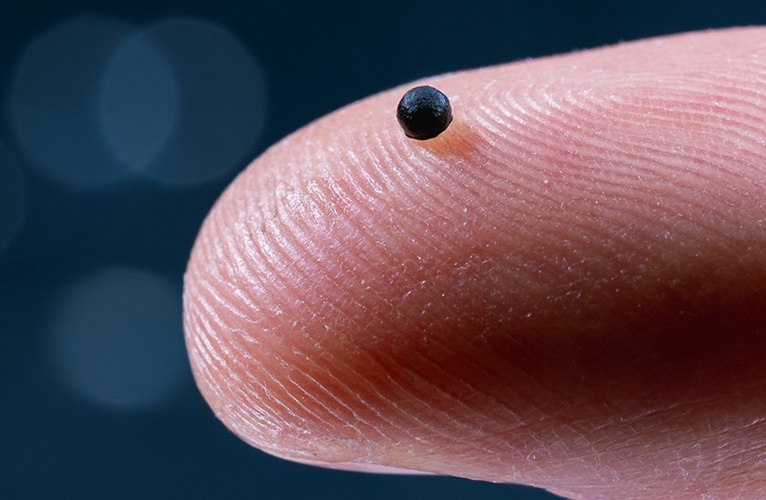
Magnetically Guided Microrobots to Enable Targeted Drug Delivery
Stroke affects 12 million people globally each year, often causing death or lasting disability. Current treatment relies on systemic administration of clot-dissolving drugs, which circulate throughout... Read more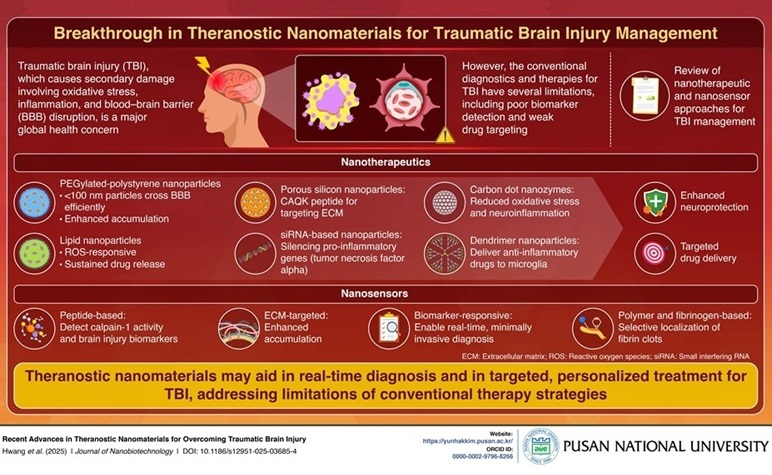
Smart Nanomaterials Detect and Treat Traumatic Brain Injuries Simultaneously
Traumatic brain injury (TBI) continues to leave millions with long-term disabilities every year. After a sudden impact from a fall, collision, or accident, the brain undergoes inflammation, oxidative stress,... Read more
Earlier Blood Transfusion Could Reduce Heart Failure and Arrhythmia in Heart Disease Patients
Blood loss during or after surgery can place significant stress on people with heart disease, increasing the risk of dangerous complications. Transfusions are often delayed until hemoglobin levels fall... Read morePatient Care
view channel
Revolutionary Automatic IV-Line Flushing Device to Enhance Infusion Care
More than 80% of in-hospital patients receive intravenous (IV) therapy. Every dose of IV medicine delivered in a small volume (<250 mL) infusion bag should be followed by subsequent flushing to ensure... Read more
VR Training Tool Combats Contamination of Portable Medical Equipment
Healthcare-associated infections (HAIs) impact one in every 31 patients, cause nearly 100,000 deaths each year, and cost USD 28.4 billion in direct medical expenses. Notably, up to 75% of these infections... Read more
Portable Biosensor Platform to Reduce Hospital-Acquired Infections
Approximately 4 million patients in the European Union acquire healthcare-associated infections (HAIs) or nosocomial infections each year, with around 37,000 deaths directly resulting from these infections,... Read moreFirst-Of-Its-Kind Portable Germicidal Light Technology Disinfects High-Touch Clinical Surfaces in Seconds
Reducing healthcare-acquired infections (HAIs) remains a pressing issue within global healthcare systems. In the United States alone, 1.7 million patients contract HAIs annually, leading to approximately... Read moreHealth IT
view channel
EMR-Based Tool Predicts Graft Failure After Kidney Transplant
Kidney transplantation offers patients with end-stage kidney disease longer survival and better quality of life than dialysis, yet graft failure remains a major challenge. Although a successful transplant... Read more
Printable Molecule-Selective Nanoparticles Enable Mass Production of Wearable Biosensors
The future of medicine is likely to focus on the personalization of healthcare—understanding exactly what an individual requires and delivering the appropriate combination of nutrients, metabolites, and... Read moreBusiness
view channel
Philips and Masimo Partner to Advance Patient Monitoring Measurement Technologies
Royal Philips (Amsterdam, Netherlands) and Masimo (Irvine, California, USA) have renewed their multi-year strategic collaboration, combining Philips’ expertise in patient monitoring with Masimo’s noninvasive... Read more
B. Braun Acquires Digital Microsurgery Company True Digital Surgery
The high-end microsurgery market in neurosurgery, spine, and ENT is undergoing a significant transformation. Traditional analog microscopes are giving way to digital exoscopes, which provide improved visualization,... Read more
CMEF 2025 to Promote Holistic and High-Quality Development of Medical and Health Industry
The 92nd China International Medical Equipment Fair (CMEF 2025) Autumn Exhibition is scheduled to be held from September 26 to 29 at the China Import and Export Fair Complex (Canton Fair Complex) in Guangzhou.... Read more







